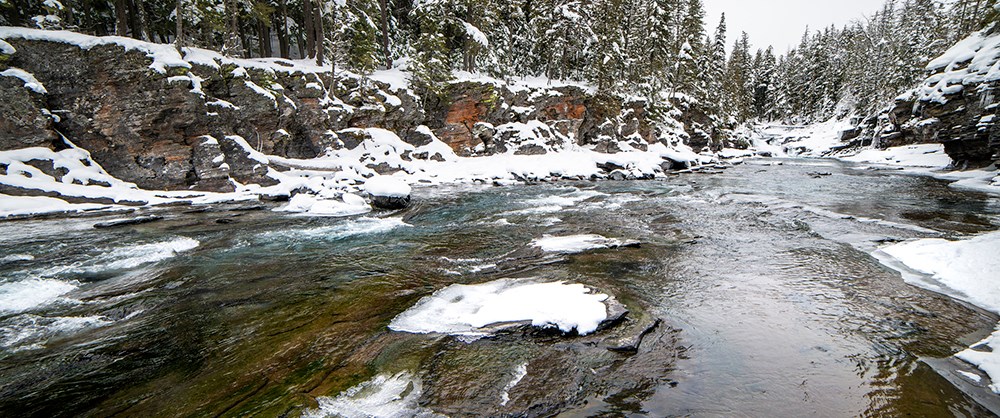
NPS The North and Middle Fork of the Flathead River bound the park on the west and the south respectively. Glacier National Park is home to 1,557 miles of streams that are fed by alpine glaciers and snowpack. McDonald Creek is the longest stream inside of the park boundary, over 25 miles (40.2 km). Countless other intermittent streams exist during melt-off, some raging torrents at times, but many dry up as quickly as they started. Once temperatures warm in the spring, the snowpack begins to melt and brings a rush of water down the mountains to join streams and rivers. When the snowpack has melted, glaciers continue to provide replenishing waters to the watershed. However, with a warming climate, western Montana is experiencing earlier spring thaws and more precipitation falling as rain instead of snow in the winter, both of which affect the contribution of snowpack and glacial melt to our rivers and streams. Glacier's water can be considered the headwaters of the entire continent. From Triple Divide Peak, a droplet can theoretically split three ways and eventually make it to the Pacific, Atlantic and Hudson Bay watersheds. As part of the source water for North America, its cleanliness is important to everyone on the continent. Streams are corridors for spawning fish, a huge and relatively unknown diversity of aquatic invertebrates, water ouzels (dippers), harlequin ducks, beavers, otters, kingfishers, eagles, and numerous other animals. Riverbeds are superficial boundaries of a stream. In many places, water moves through porous gravels and pebbles underground, and emerges again farther downstream. Recent research at the edge of Glacier in the Middle Fork Flathead River has turned up entire "interstitial" ecosystems, permanently underground, containing over 80 organisms. So far, nearly 50 of these creatures of the dark were previously unknown to science. |
Last updated: June 23, 2016
